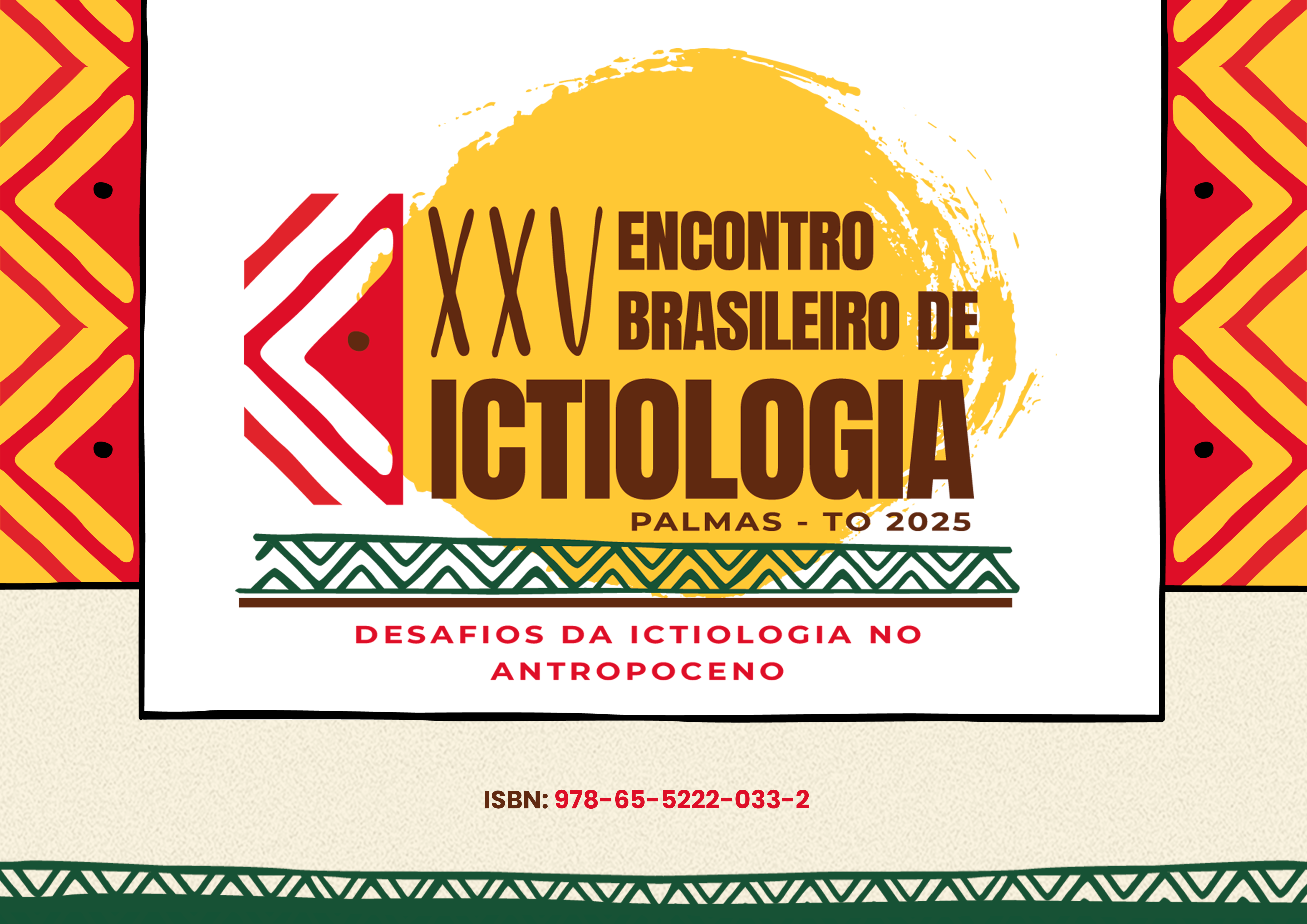COMPARATIVE MORPHOLOGY OF THE BIOLUMINESCENT TUBE ORGAN IN PLATYTROCTIDAE (TUBESHOULDERS)
"2025-02-12 10:36:07" // app/Providers/../Base/Publico/Artigo/resources/show_includes/info_artigo.blade.php
App\Base\Administrativo\Model\Artigo {#1845 // app/Providers/../Base/Publico/Artigo/resources/show_includes/info_artigo.blade.php #connection: "mysql" +table: "artigo" #primaryKey: "id" #keyType: "int" +incrementing: true #with: [] #withCount: [] +preventsLazyLoading: false #perPage: 15 +exists: true +wasRecentlyCreated: false #escapeWhenCastingToString: false #attributes: array:35 [ "id" => 119695 "edicao_id" => 384 "trabalho_id" => 172 "inscrito_id" => 797 "titulo" => "COMPARATIVE MORPHOLOGY OF THE BIOLUMINESCENT TUBE ORGAN IN PLATYTROCTIDAE (TUBESHOULDERS)" "resumo" => "Bioluminescence (light produced by a living organism) is a key innovation in the diversification of deep-sea fishes. Bioluminescence is useful for a myriad of behaviors and interactions in the deep sea, including predation, camouflage via counterillumination, and predator escape. In this study, we investigate the deep-sea tubeshoulders (Platytroctidae), fishes that possess a postcleithral light organ associated with their shoulder girdle that excretes bioluminescent fluid. Many tubeshoulders also possess additional light organs on the lateral and ventral surface of their bodies. Tubeshoulders are an understudied group, and most species are rarely collected. To advance our understanding of the Platytroctidae tube organ, this study uses histological methods to investigate the morphological diversity in the tube organ structure across 14 species of platytroctids, representing 10 of the 13 total genera. We find that the tube organ has a generally conserved morphology across species. In some individuals, we also find the presence of luminescent fluid cells over various stages of development. These cells may provide evidence for the gland type found in this novel bioluminescent light organ." "modalidade" => "Comunicação Oral (CO)" "area_tematica" => "AT 06 - Anatomia e Morfologia" "palavra_chave" => ", , , , " "idioma" => "Português" "arquivo" => "TRABALHO__EV205_MD1_ID797_TB172_24092024185809.pdf" "created_at" => "2025-02-13 11:08:16" "updated_at" => null "ativo" => 1 "autor_nome" => "EMILY CARR" "autor_nome_curto" => "EMILY" "autor_email" => "ecarr@amnh.org" "autor_ies" => "OUTRA / MINHA INSTITUIÇÃO NÃO ESTÁ NA LISTA" "autor_imagem" => "" "edicao_url" => "anais-do-ebi---encontro-brasileiro-de-ictiologia" "edicao_nome" => "Anais do EBI - Encontro Brasileiro de Ictiologia" "edicao_evento" => "XXV ENCONTRO BRASILEIRO DE ICTIOLOGIA" "edicao_ano" => 2025 "edicao_pasta" => "anais/ebi/2025" "edicao_logo" => null "edicao_capa" => "67b49e4d8c758_18022025115053.png" "data_publicacao" => null "edicao_publicada_em" => "2025-02-12 10:36:07" "publicacao_id" => 116 "publicacao_nome" => "Revista EBI" "publicacao_codigo" => "978-65-5222-033-2" "tipo_codigo_id" => 2 "tipo_codigo_nome" => "ISBN" "tipo_publicacao_id" => 1 "tipo_publicacao_nome" => "ANAIS de Evento" ] #original: array:35 [ "id" => 119695 "edicao_id" => 384 "trabalho_id" => 172 "inscrito_id" => 797 "titulo" => "COMPARATIVE MORPHOLOGY OF THE BIOLUMINESCENT TUBE ORGAN IN PLATYTROCTIDAE (TUBESHOULDERS)" "resumo" => "Bioluminescence (light produced by a living organism) is a key innovation in the diversification of deep-sea fishes. Bioluminescence is useful for a myriad of behaviors and interactions in the deep sea, including predation, camouflage via counterillumination, and predator escape. In this study, we investigate the deep-sea tubeshoulders (Platytroctidae), fishes that possess a postcleithral light organ associated with their shoulder girdle that excretes bioluminescent fluid. Many tubeshoulders also possess additional light organs on the lateral and ventral surface of their bodies. Tubeshoulders are an understudied group, and most species are rarely collected. To advance our understanding of the Platytroctidae tube organ, this study uses histological methods to investigate the morphological diversity in the tube organ structure across 14 species of platytroctids, representing 10 of the 13 total genera. We find that the tube organ has a generally conserved morphology across species. In some individuals, we also find the presence of luminescent fluid cells over various stages of development. These cells may provide evidence for the gland type found in this novel bioluminescent light organ." "modalidade" => "Comunicação Oral (CO)" "area_tematica" => "AT 06 - Anatomia e Morfologia" "palavra_chave" => ", , , , " "idioma" => "Português" "arquivo" => "TRABALHO__EV205_MD1_ID797_TB172_24092024185809.pdf" "created_at" => "2025-02-13 11:08:16" "updated_at" => null "ativo" => 1 "autor_nome" => "EMILY CARR" "autor_nome_curto" => "EMILY" "autor_email" => "ecarr@amnh.org" "autor_ies" => "OUTRA / MINHA INSTITUIÇÃO NÃO ESTÁ NA LISTA" "autor_imagem" => "" "edicao_url" => "anais-do-ebi---encontro-brasileiro-de-ictiologia" "edicao_nome" => "Anais do EBI - Encontro Brasileiro de Ictiologia" "edicao_evento" => "XXV ENCONTRO BRASILEIRO DE ICTIOLOGIA" "edicao_ano" => 2025 "edicao_pasta" => "anais/ebi/2025" "edicao_logo" => null "edicao_capa" => "67b49e4d8c758_18022025115053.png" "data_publicacao" => null "edicao_publicada_em" => "2025-02-12 10:36:07" "publicacao_id" => 116 "publicacao_nome" => "Revista EBI" "publicacao_codigo" => "978-65-5222-033-2" "tipo_codigo_id" => 2 "tipo_codigo_nome" => "ISBN" "tipo_publicacao_id" => 1 "tipo_publicacao_nome" => "ANAIS de Evento" ] #changes: [] #casts: array:14 [ "id" => "integer" "edicao_id" => "integer" "trabalho_id" => "integer" "inscrito_id" => "integer" "titulo" => "string" "resumo" => "string" "modalidade" => "string" "area_tematica" => "string" "palavra_chave" => "string" "idioma" => "string" "arquivo" => "string" "created_at" => "datetime" "updated_at" => "datetime" "ativo" => "boolean" ] #classCastCache: [] #attributeCastCache: [] #dates: [] #dateFormat: null #appends: [] #dispatchesEvents: [] #observables: [] #relations: [] #touches: [] +timestamps: false #hidden: [] #visible: [] +fillable: array:13 [ 0 => "edicao_id" 1 => "trabalho_id" 2 => "inscrito_id" 3 => "titulo" 4 => "resumo" 5 => "modalidade" 6 => "area_tematica" 7 => "palavra_chave" 8 => "idioma" 9 => "arquivo" 10 => "created_at" 11 => "updated_at" 12 => "ativo" ] #guarded: array:1 [ 0 => "*" ] }



